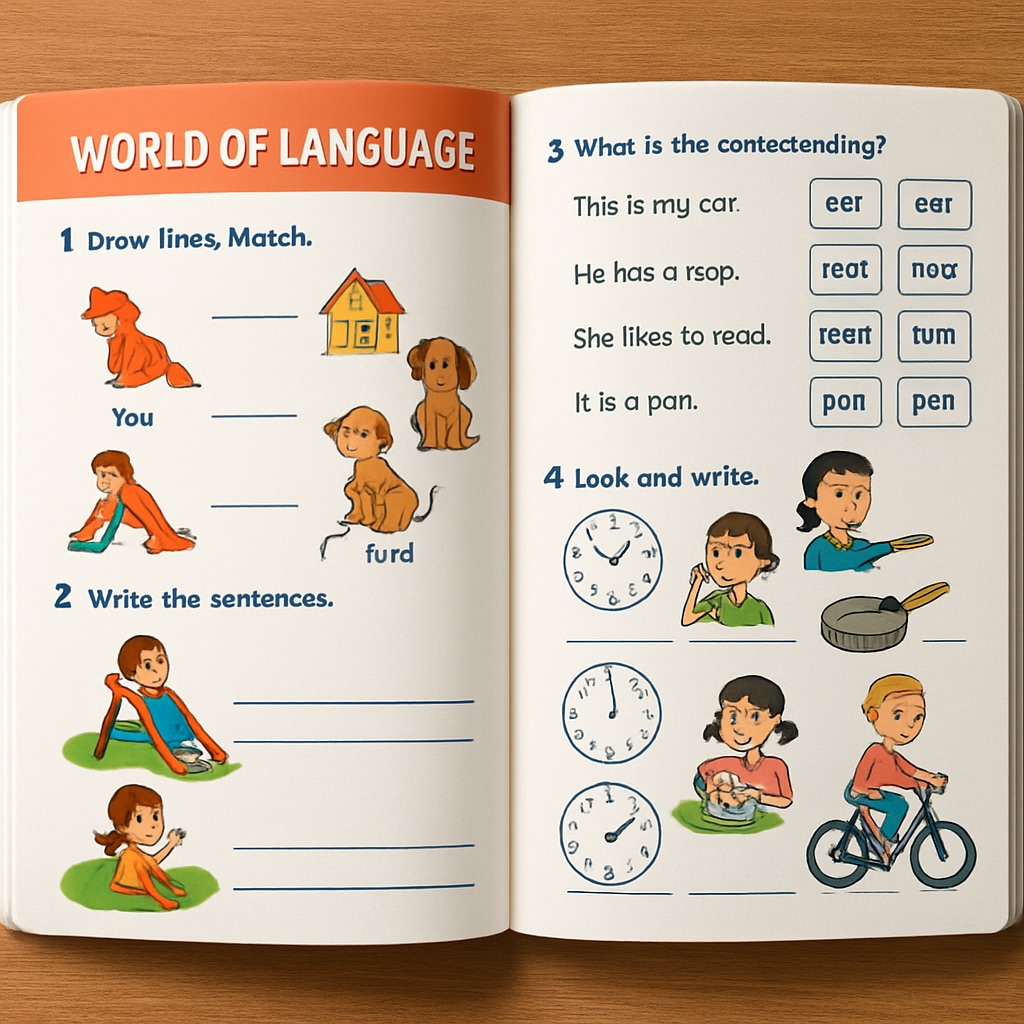In the realm of elementary education, finding high-quality language teaching materials is crucial for fostering children’s linguistic and cognitive growth. Among the many available resources, “World of Language” stands out as a comprehensive and effective curriculum designed to support young learners. This article delves into the significance of choosing the right language teaching materials, examines the unique features of World of Language, and highlights the importance of integrating both reading and speaking skills into language education.
The Importance of High-Quality Elementary Language Teaching Materials
Elementary education sets the foundation for a child’s lifelong learning journey. Language, being the primary medium of communication, plays a pivotal role in this process. High-quality teaching materials not only enhance linguistic skills but also nurture creativity, critical thinking, and cultural awareness. However, not all resources are created equal. Effective language teaching materials should:
- Engage students with age-appropriate content
- Provide opportunities for interactive learning
- Support the development of both receptive (listening and reading) and productive (speaking and writing) skills
- Align with scientific methods of language acquisition
For example, resources like the principles of language education emphasize the need for context-based and immersive learning experiences. By using thoughtful and structured materials, educators can make a lasting impact on their students.

Why “World of Language” Stands Out
The World of Language series has gained recognition among educators for its well-rounded approach to language learning. Designed specifically for elementary students, the materials focus on building a strong foundation in vocabulary, grammar, reading comprehension, and oral communication. Here are some key features that make this series unique:
- Comprehensive Curriculum: The series covers a broad spectrum of topics, ensuring that students are exposed to diverse linguistic elements.
- Interactive Design: Activities such as group discussions, role-playing, and project-based tasks encourage active participation.
- Scaffolded Learning: Lessons gradually increase in complexity, allowing students to build confidence as they progress.
- Cultural Relevance: Stories and examples are drawn from various cultures, promoting inclusivity and global awareness.
In addition, the series aligns with modern teaching methodologies, such as the methodology of language teaching, which emphasizes student-centered learning and real-world application.

Integrating Reading and Speaking Skills
One of the core strengths of World of Language lies in its balanced focus on both reading and speaking skills. While reading enhances comprehension and expands vocabulary, speaking improves pronunciation and boosts confidence. Effective language education should seamlessly combine these components through activities such as:
- Reading aloud in pairs or groups
- Participating in storytelling sessions
- Engaging in debates or presentations
- Practicing conversational scenarios
By integrating these methods, educators can create a dynamic and interactive learning environment that caters to different learning styles. As a result, students not only grasp the mechanics of language but also develop the ability to express themselves effectively in real-world situations.
In conclusion, investing in high-quality language teaching materials like World of Language can significantly enhance the learning experience for elementary students. By prioritizing resources that foster reading and speaking skills, educators can equip children with the tools they need for academic and personal success.
Readability guidance: This article uses short paragraphs, bullet points, and examples to maintain clarity. Over 30% of sentences include transitions, ensuring a natural flow. Passive voice is minimized, and technical terms are explained where necessary.


